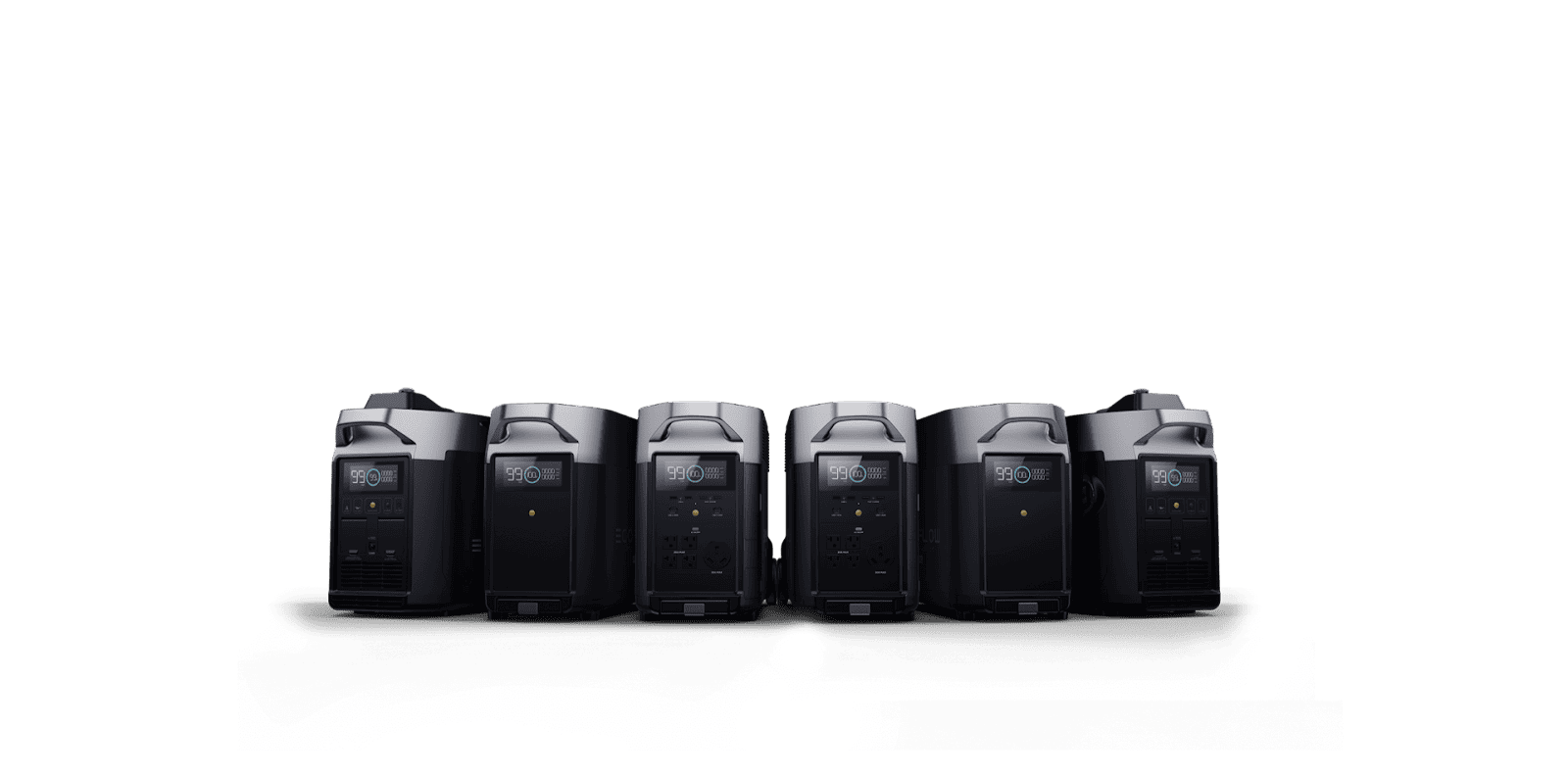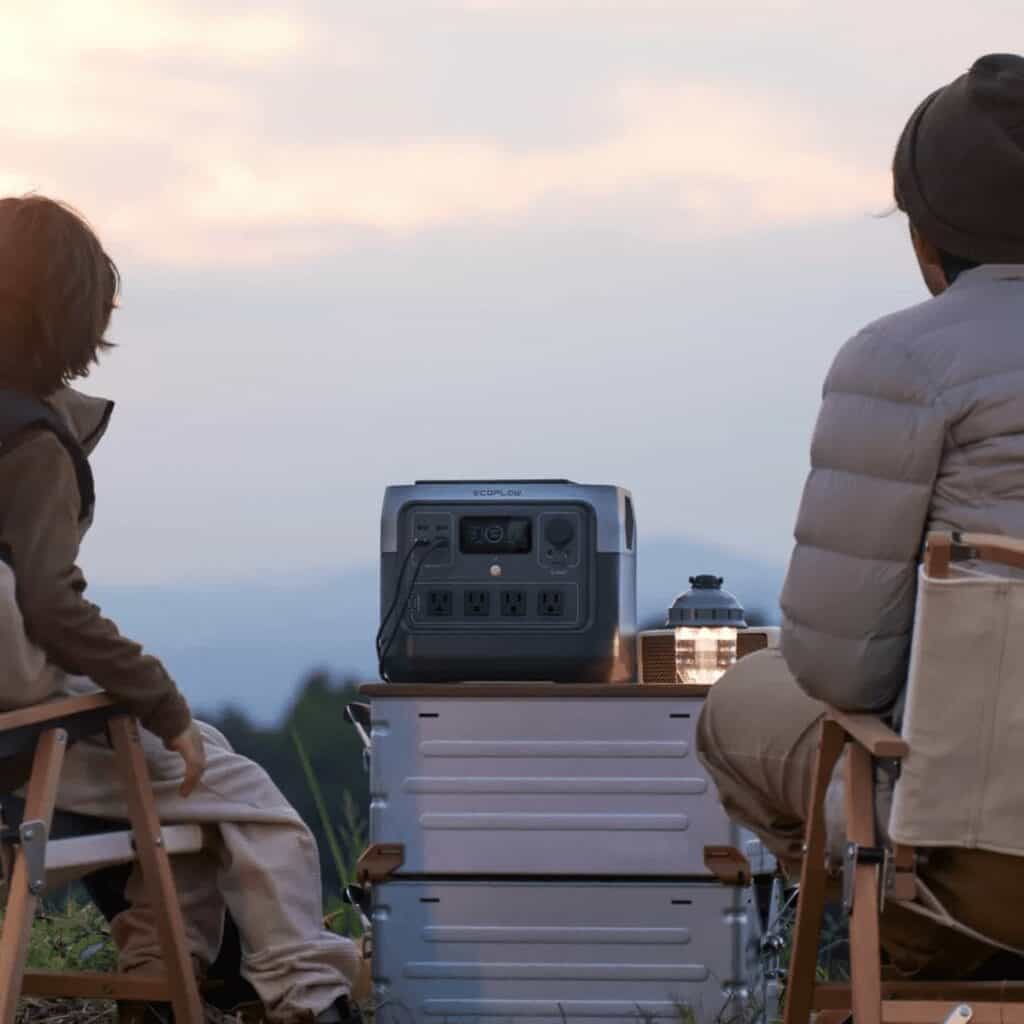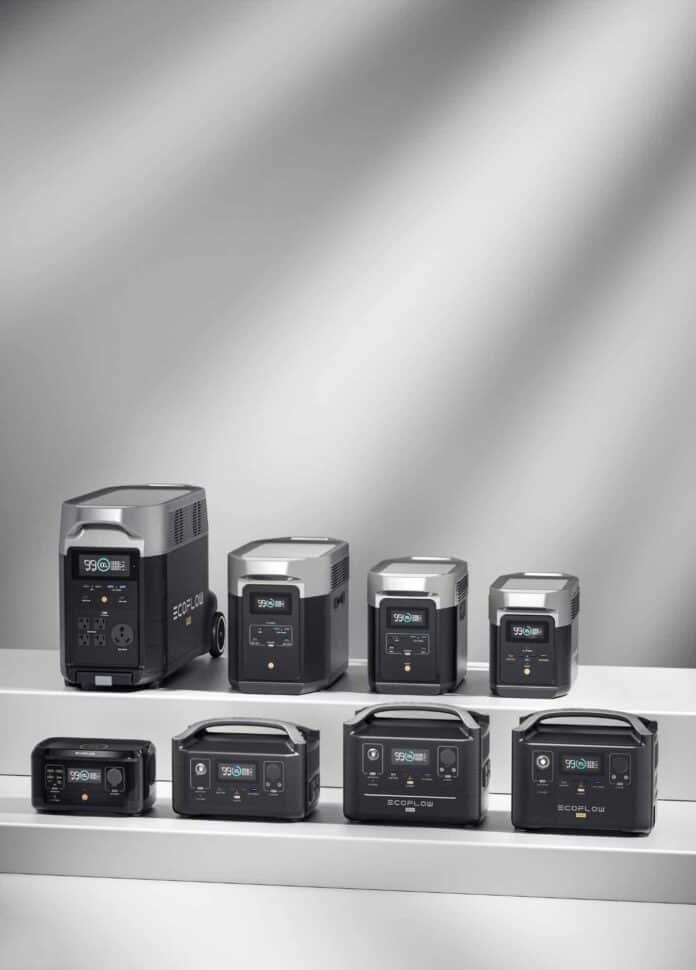When it comes to backup power, people often find themselves weighing their options between a portable power station and a power bank. But what’s the difference?
While they operate similarly, it’s easy to get them confused. But there are clear and distinct differences between them. When you need to power your devices or run a home appliance, it’s crucial to know the difference. That way, you can have the power you need — when you need it most.
This guide will explain the differences between portable power stations and power banks and which one you should choose.
What Is a Portable Power Station?
A portable power station (PPS) is essentially a rechargeable battery that lets you take electricity anywhere. It allows you to supply backup power to electrical devices, household appliances, and more, providing a great energy source for emergency power outages and off-grid travel.
Traditional generators typically have a built-in motor and require fossil fuel to generate power. However, PPS units store electricity in their onboard batteries to use whenever needed.
A PPS contains three main components: a battery, inverter, and a charge controller. The battery cells store the energy. Newer stations are equipped with lithium batteries, which are lightweight, more efficient, and safe to discharge to a lower voltage without damaging the battery.
The inverter converts the DC battery power to AC power, which most household appliances and electrical devices use. Lastly, the charge controller protects the battery so it doesn’t overcharge.
Other common features you may find in a power station include DC outputs, USB outputs, and built-in handles or wheels to increase portability.

EcoFlow DELTA Pro
The EcoFlow DELTA Pro is one of the new generation of portable power stations. For its compact size, this PPS packs a massive punch. Starting with a 3.6kWh capacity that you can expand up to 25kWh, it’s the most robust solution for camping, road trips, or home backup during power outages.
Even more impressively, you can add portable solar panels to make the DELTA Pro into a solar generator. That means more power, less reliance on the grid, and lower energy costs.
What Is a Power Bank?
A power bank is a charging device that stores electric energy to charge gadgets such as your smartphones, laptops, tablets, and more. It’s a reliable and affordable energy source that you can take on the go.
You’ll likely need to charge the unit using a wall outlet. Once the power bank has charged, you can connect your devices to the power bank using the appropriate cables.
Power banks are available in various capacities, typically ranging between 1000 to 50,000 mAh. There are many designs on the market that may suit your needs.
Differences Between Portable Power Station and Power Bank
While portable power stations and power banks perform similar functions, several critical differences exist.

Weight
First, the most noticeable difference between the two is the size and weight. Take, for example, the EcoFlow River 2 Portable Power Station. It is about the size of a boombox stereo and weighs just under 8 pounds.
Conversely, a power bank may weigh less than two pounds. It’s a more lightweight option if you want something to store in your backpack, but it will offer far less charge capacity.
Output
The main difference between these two pieces of equipment is their output. A PPS stores more power and can handle even high-wattage appliances. For example, keeping with the EcoFlow River 2 PPS, the output capacity can handle devices up to 600W. This allows you to use devices such as your refrigerator, projector, 50-inch TV, blender, small Keurig, and more.
In contrast, power banks are typically for smaller devices like smartphones, laptops, or tablets. They usually feature USB inputs for charging digital devices.
Capacity
A PPS will have a larger battery capacity than a power bank. The River 2 PPS sports up to 256Wh of capacity.
Meanwhile, a power bank has less capacity, usually ranging from 2000-10,000mAh. It seems like a high capacity until you convert it to Wh. A 10,000 mAh battery with a 3.6V voltage only delivers 36Wh.
Recharging Options
PPS units like the EcoFlow River 2 also have solar charging capability, meaning you don’t need to plug it into an outlet to recharge. You can hook it up to a 110W EcoFlow solar panel or buy them together and access free, renewable energy.
There are many reasons to choose solar energy. It’s clean, renewable, and free once you purchase the right equipment. Solar panels generate energy off-grid, meaning you can take power on the road or use it as a home backup in the event of a blackout.
Power banks rely on grid electricity to recharge. It means higher recharging costs and less freedom from the grid.
Should I Purchase a Portable Power Station or a Power Bank?
Depending on your needs, you’ll need to determine whether a PPS or power bank is right for you. A power bank can offer a reliable energy source for your small personal electronics if you need a lightweight (and short-term) charging solution to carry in your backpack. However, the PPS is better suited for extended off-grid activities, motorhome living, and emergency power outages. Below, we’ll cover these scenarios more in-depth.
Small Electronics
A power bank can be a solid solution for backup energy if you only need to recharge one or two devices. It’s easy to carry on the go, whether going to school, commuting to work, or flying on an aeroplane.
That said, a PPS also can charge your electronics — and more of them. Items like the River 2 can charge multiple devices simultaneously, while the DELTA Pro has as many as 15 outlets. Your whole family could charge their smartphones, laptops, and more. You just probably can’t take it carry-on on an airplane.
Camping
Outdoor off-grid usage is where PPS units shine, especially for motorhome enthusiasts and adventurers looking to enjoy nature while using modern technologies. They can supply energy for all the necessary appliances in your tent, boat, motorhome, or other off-grid locations.
A PPS for camping allows you to generate energy for night lamps, electronics, coffee makers, a hot stove, and other appliances simultaneously. Add the right solar panels, and you can generate all the energy you need, no matter where you go.
Motorhome
When you find a campground or motorhome park, you’ll want to research whether you have access to internet connectivity, cell phone reception, and other necessities like potable water. Motorhomes tend to spend a lot of time on the road, and a PPS reduces the drain on your vehicle’s petrol.
Using a car generator will only cause you to burn through your fuel quickly. But with a PPS and solar panel setup, you don’t need to worry about fuel efficiency and costs of powering your motorhome appliances and devices.
Home Use
Power banks can be useful for in-home use, especially when using office devices such as your phone, tablet, or laptop without an outlet in sight. You can even use your electronics while charging.
However, a PPS offers a more reliable and robust solution better suited for appliances such as microwaves, electric grills, mini coolers, pressure cookers, and coffee makers. Larger capacity PPS units will run refrigerators, space heaters, and more.
Furthermore, you can use portable stations for home outdoor use, such as in your backyard or shed, especially if an outlet is unavailable.
Of course, a PPS will also provide you with more electricity and storage capacity for emergencies. Electrical outages can last a long time — the more capacity at your disposal, the better. A PPS operates even while charging your devices, ensuring you have smooth, uninterrupted power.
What to Look for in Portable Power Stations
If you’re considering a PPS, here’s what to look for to find the right one.
Capacity
The capacity measured in Watt-hour (Wh) refers to how long your station will last. The PPS solutions from EcoFlow range from 288Wh to 3600 Wh. And with expandable battery capacity, you can supercharge your PPS up to 25kWh.
Specifications and Features
Of course, you want to ensure all the specifications and features align with your needs. For example, how big is the PPS, and how much does it weigh? Having a built-in handle or wheels gives greater portability. In general, the larger the output capacity, the bigger your station will be.
You can even purchase EcoFlow solar panels to turn your PPS into a solar generator. The compatibility with solar panels helps you achieve energy independence from the grid.
Conclusion
Choosing between a portable power station and a power bank will depend on your needs. A PPS is more effective, especially for outdoor camping, motorhome trips, or emergency backup for your home. A power bank is better for short-term, low-power output applications, such as charging your smartphone on the go. Now that you know the differences between portable power stations and power banks — and how they work — you can make an informed decision about which is right for you.
